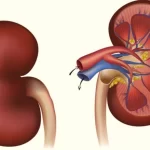Respiratory system diseases introduction
Respiratory system diseases are quite common . just like the gastrointestinal system, the systema respiratorium also has got to face more external things. this is often why tract allergies and infections are so common. Avoiding airborne infections isn’t as easy as avoiding infections caused by food and water. Awareness of a few better diets, home, and health (eg avoiding smoking) are usually important. Constantly increasing pollution is additionally very harmful to respiratory system diseases.
Coughing is the commonest of all diseases of the systema respiratorium. Khonsi isn’t a disease in itself. it’s actually a symbol of some quite disease. But often the treatment focuses on cough instead of a disease, which is wrong. Syrup given for coughing is usually not effective. The diagnosis of the place and explanation for the difficulty is important. Knowledge of the composition and performance of the Shassan system can help us.
How does the systema respiratorium work?
Respiratory system disease values are a reverse tree. It involves the exchange of gases between the airways and therefore the air of the alveoli. The muscles of the chest and therefore the muscular veil (diaphragm) or diaphragm under the lungs help in air ventilation. The upper part of the systema respiratorium consists of the nose, larynx, and larynx.
In the lower a part of the systema respiratorium, the most tract and its branches i.e. bronchus, small branches and many alveoli are networked with microscopic hair vessels. it’s easier to know by dividing the systema respiratorium into the upper and lower parts. Upper extremity infections are usually self-healing. But lower extremity infections are usually serious and may sometimes be fatal.
The upper a part of the systema respiratorium
There is a cave place inside the nose. it’s not known from outside. it’s sort of a cave made from bones, which is roofed with a skinny membrane from inside. it’s special sorts of cells and nerves that act as sniffing. a skinny wall divides the nasal cave into two.
This wall of the nose can bulge on anybody’s side, thanks to which it becomes smaller on the side. it’s difficult to breathe with this thin side. If this complaint starts recurring or causes more trouble then it is often corrected by an operation. Removing the layer of sentimental bones from the wall removes bulge.
Respiratory system diseases Sinus
Cyanus swelling and pain locations
There are other caves inside the nose called a sinus. There are four sinuses on either side of the nose. Infections of the upper extremities thanks to nasal congestion can cause sinus inflammation.
Ent tube
The Eustachian tube, here we’ll also call the Ent tube, connects the nose to the ears. From this tube, infection of the upper a part of the systema respiratorium also reaches the ears. Ear infections are quite common in children. the rationale for this is often that the ENT tubes in them are more straight and shorter.
Pharynx
The next a part of the systema respiratorium is that the pharynx. Both air and food undergo it. The air goes down and reaches the bronchus through the larynx. we will check the throat by opening the mouth of the patient and calling him ‘A’. thanks to this, the throat becomes big and opens the palate. First, do that test on your own neck by looking within the mirror.
Adenoid
The two glands on the highest of the wall behind the throat remain somewhat hidden. These are called Kanthalaluk. they’re above the extent of the palate. The swelling of those makes it difficult to require the sauce. This causes the kid to open his mouth and breathe. there’s also some sound from the throat during sleep.
Lower tract
This whole system is like an inverted tree. The lower systema respiratorium begins within the tract. it’s a robust tube made from attendant snares. It also features a thin layer of muscle. there’s a special layer of cells on the within of the tube. These cells are literally microscopic hairs, they’re called Sephora. The pimples move in waves just like the wheat field from the wind. These cells always move towards the larynx. thanks to this, all the particles and secretions from the lungs keep going towards the throat. it’s swallowed here. Usually, it’s not even noticed. But more mucus comes out from any infection and if it comes within the throat like this, then attention is paid thereto.
Epiglottis
If both food and air undergo the throat, then why doesn’t our throat choke whenever we eat or drink water? Or how the food doesn’t enter the voice instrument? this is often because once we are swallowing food, a flat curtain covers the voice instrument. If you open your mouth and are available out, then you’ll see these epigraphs momentarily, but sometimes the lid messes up while eating and therefore the food particles enter the larynx. This removes strong cough and food particles.
Large respiratory (bronchi) and little respiratory
The track divides the center of the chest into two respirators – left and right. These are then divided into three branches which are for the upper, middle and lower lobes of the lungs.
Respiratory system diseases Bronchial discharge
These streams keep the tree wet. This doesn’t dry the inner lining of those tubes and is safe. Romans continuously push these secretions towards the larynx. Where these secretions come to the throat and that we swallow them. These secretions increase thanks to any quite infection or irritation. For this reason, phlegm comes to call at some respiratory system diseases.
Alveoli and respiratory system disease
The last part of the respiratory system disease is that the air sac. the method of breathing actually takes place in these air sacs and therefore the blood vessels related to them. These are literally small balloons that expand and shrink during respiration. The walls of the alveoli are thin and pierced. Therefore, gases are exchanged comfortably from the alveoli and capillaries. Oxygen from the air sacs goes to the red blood cells located within the hair tubes. Out of the red blood particles, the CO2 goes into the air of the alveoli.
The exchange of gases, once we inhale, the fresh air goes into the alveoli. once we exhale, the air containing CO2 exits the lungs. CO2 prevents the digestion of food within the body. it’s a traditional exchange of gases. Sometimes some gaseous substances also can enter the transmission that’s actually harmful to the body (such as poisonous gases or sedating gases). The vapor of some things sometimes comes calling at the lungs, like the vapor of alcohol, it brings out a specific smell from the breath.
Breathing may be a vital process. thanks to this, there’s a continuing balance of oxygen and CO2 within the body. Breathing can cause death within a couple of minutes. In pneumonia, one or two segments of the lungs are affected, this affects the power of the lungs to handle oxygen-carbon dioxide. This sends a message to the brain, which then tells the remainder of the lungs to figure more, which causes breathlessness. Submerging in water fills all the alveoli. it’s unable to exchange oxygen-carbon dioxide and dies within minutes.
Respiratory system diseases Lung cover
The lungs are covered with two thin layers (you can imagine the lungs as two folded balloons). Between these layers may be a thin layer of fluid that keeps them smooth. additionally, there’s empty space between these folds. The lungs are filled and empty as they’re above the chest. If there’s a hole within the chest wall, the air fills the space between the folds. This causes a collapse of the lung thereon side. The presence of excess fluid during this empty space also puts pressure on the lungs and damages it. this will happen in tuberculosis.
Respiratory system disease muscles
The chest has lungs inside the cage of bones. With the assistance of the intercostal muscles and diaphragm, the chest is lowered upwards.
Breath rate
Adult people breathe 15 to twenty times during a minute. Children breathe more often than adults, thanks to exercise and excitement, it’s evident that the speed of breathing increases.





